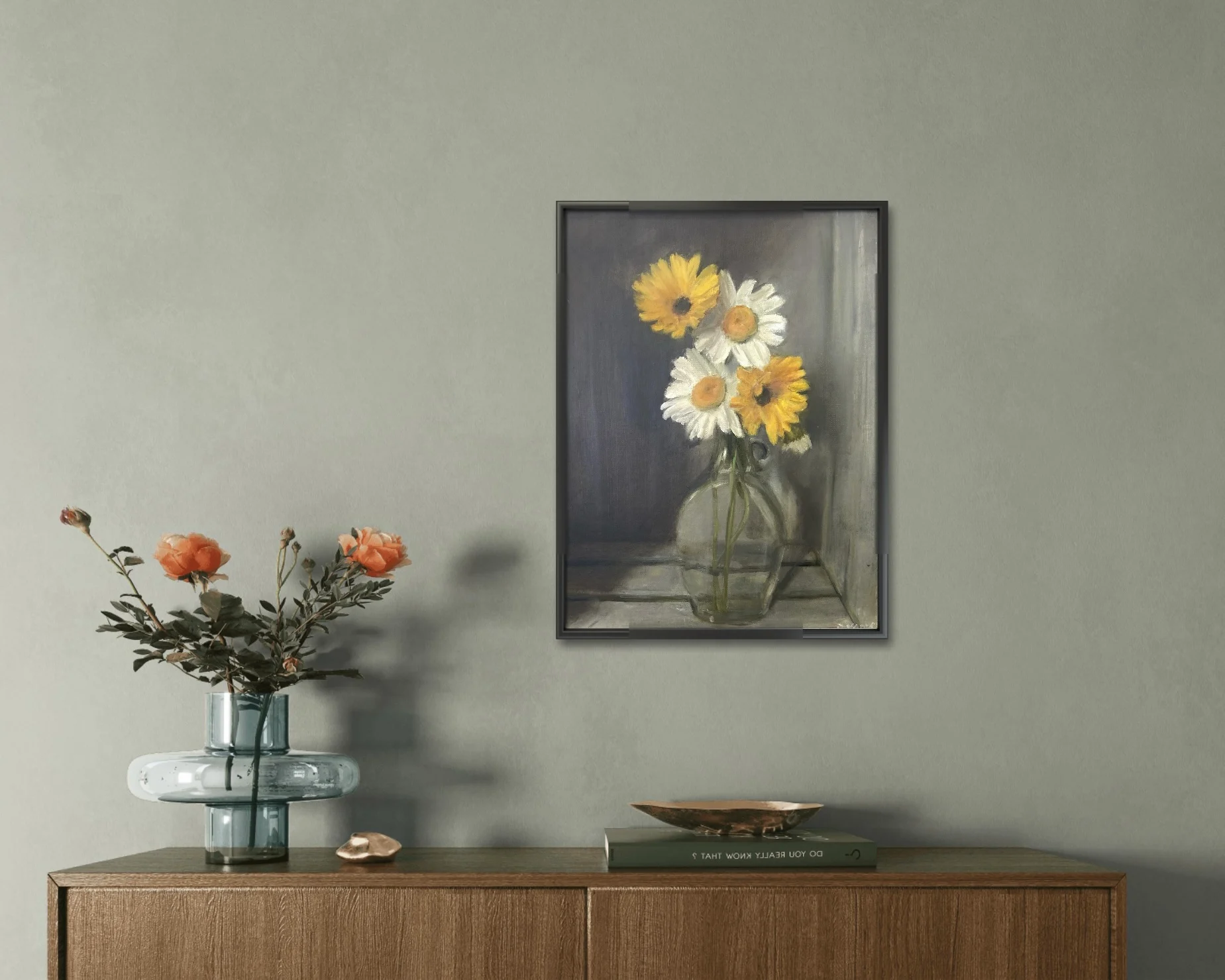How to Look After an Original Oil Painting: A Complete Guide

Owning an original oil painting is a wonderful experience, whether it’s a recent purchase or a treasured piece you’ve had for years. Oil paintings are surprisingly durable and require very little maintenance —but there are a few things to be mindful of. Here’s everything you need to know to protect and preserve your new artwork.
1. Choose the Right Placement
Where you hang your oil painting can have a big impact on its longevity. Follow these guidelines to avoid environmental damage:
- Avoid direct sunlight – While oil paintings are more resistant to fading than watercolors or prints, prolonged exposure to UV rays can still cause colors to lose their vibrancy over time.
- Keep away from heat sources – Fireplaces, radiators, and heating vents can cause the paint and canvas to dry out, leading to potential warping or cracking.
- Control humidity levels – Excess moisture can encourage mold growth, while overly dry conditions can make the paint brittle. A stable humidity level of around 40-50% is ideal.
- Minimize exposure to pollutants – Smoke, cooking fumes, and airborne dust can settle on the painting, dulling its appearance over time.
2. Handle with Care
While oil paintings are relatively sturdy, handling them improperly can still cause issues.
- Always wash and dry your hands before touching the frame or canvas to prevent transferring dirt and oils.
- Hold the painting by the frame rather than touching the surface.
- If the painting is unframed, wear cotton gloves to avoid leaving fingerprints or causing accidental smudges.
3. Regular Dusting and Cleaning
Dust can accumulate on an oil painting over time, but cleaning should always be done with care.
- Use a soft, dry microfiber cloth or a natural-hair brush (like a soft makeup or artist’s brush) to gently remove surface dust.
- Never use water, household cleaners, or commercial dust sprays, as these can damage the paint.
- If the painting has heavy dirt buildup or a dull, yellowed appearance, consult a professional conservator rather than attempting to clean it yourself.
4. Varnish Maintenance and Replacement
Varnish serves as a protective layer, shielding the paint from dust, dirt, and UV exposure. Over time, however, varnish can become yellowed or cloudy, making the painting appear dull.
- If an oil painting looks discolored or loses its vibrancy, it may be due to aged varnish.
- A professional conservator can carefully remove old varnish and apply a fresh layer, restoring the painting’s original depth and colors.
- Never attempt to remove or replace varnish yourself, as improper handling can damage the paint underneath.
5. Frame Protection
A high-quality frame not only enhances the appearance of an oil painting but also provides structural support and protection.
- A well-fitted frame with a protective lip helps shield the edges of the canvas from accidental damage.
- Avoid glass framing unless the painting is on paper or an extremely fragile surface, as trapped moisture can cause issues over time.
- Check the hanging hardware periodically to ensure the painting is securely mounted on the wall.
6. Storage Tips for Long-Term Preservation
If you need to store an oil painting for an extended period:
- Store it upright in a cool, dry place—never flat, as stacking can lead to indentations and damage.
- Cover it with acid-free tissue or a breathable cloth (never plastic) to protect it from dust while allowing air circulation.
- Keep it off the floor to prevent potential water damage from leaks or spills.
7. Dealing with Damage
If you notice cracks, flaking paint, mold, or any other signs of deterioration, avoid DIY fixes. Improper restoration can cause more harm than good. Instead, consult a professional conservator who can assess the damage and recommend the best course of action.
Final Thoughts
Oil paintings are remarkably resilient, but they still need proper care to maintain their beauty. By following these simple steps—choosing the right placement, handling with care, dusting gently, maintaining the varnish, and seeking professional help when needed—you can ensure your artwork remains in excellent condition for generations to come.